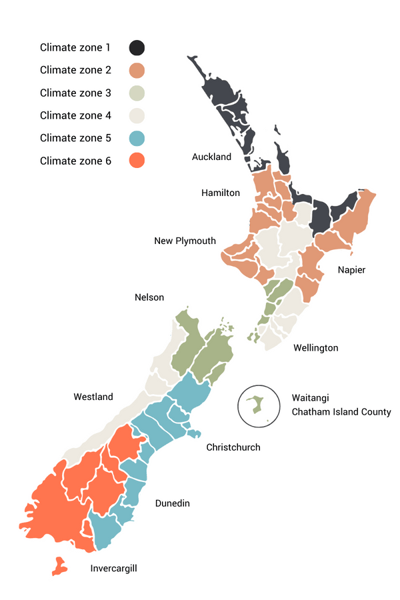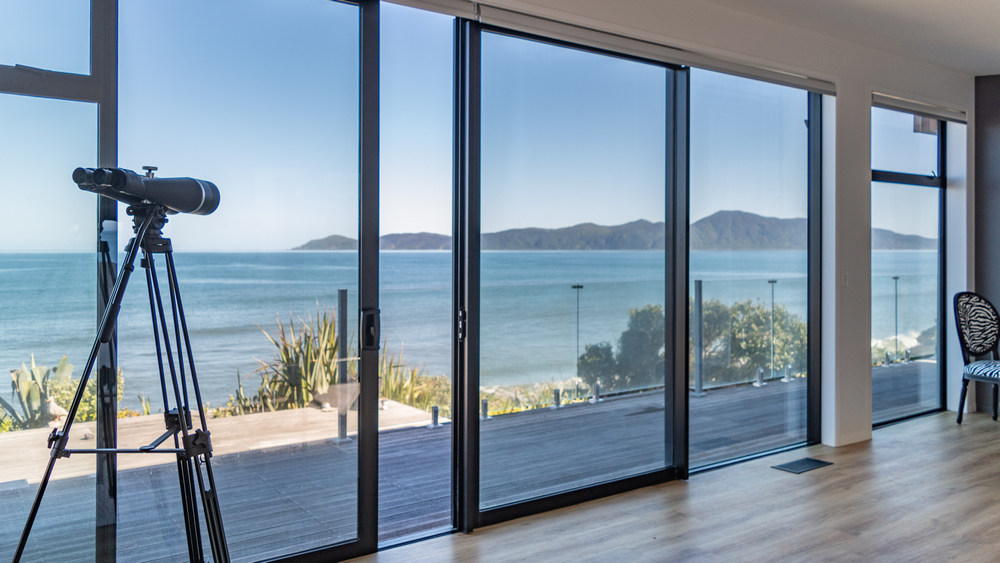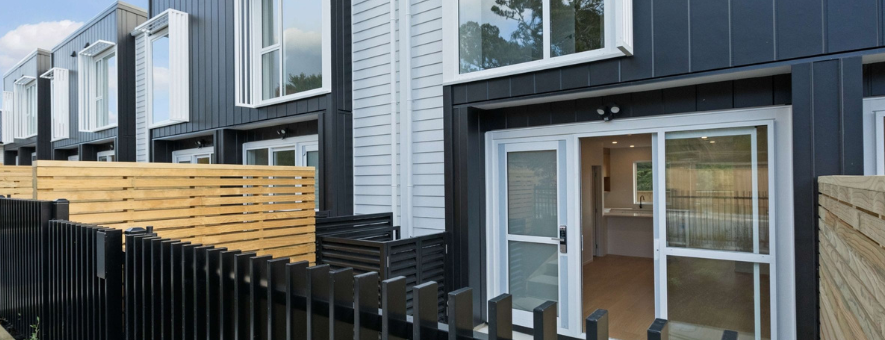One of the most important factors of energy efficiency is installing effective insulation. And to ensure the insulation you use is sufficient, you’ll need to know what its R-value is, how to calculate it, and what your local requirements are.
What is an R-value?
R-values describe how well insulation material resists heat flow. They can differ depending on thickness, the direction of the heat flow, and composition. The higher the rating, the more thermal insulation and the better the performance.
What’s the difference between R-values and U-values?
While R-value measures thermal resistance through a material, U-value measures thermal conductivity. U-value ratings generally range from 0.1 (very little heat loss) to 1.0 (high heat loss). So, if heat transfer through a certain material is minimal, its U-value will be low and its R-value will be high, making it a high-performing insulator.
While both values are used as ratings of energy efficiency, a U-value measure is often related to insulated glass units while an R-value is the inverse of the U-value and is used for a specified performance rating applicable across most insulation units. The R-value being the inverse of the U-value, is converted as 1/R = U, and 1/U = R.
How to calculate R-values
Calculating the R-value of a window is normally performed with thermal modelling software in accordance with New Zealand and European standards. This software takes into account the U-values and areas of each material comprised in the window and calculates an overall U-value for the complete window as a combined whole. Our design team utilise this thermal modelling software to ensure compliance with the new NZ Building Code H1 requirements.
As with many insulation materials, 'thicker' doesn't necessarily mean better insulators, since some thinner materials might have better thermal resistance. For example, while 50mm polystyrene is considerably thinner than 80mm thick glass wool, both have an R-value of approximately 1.5.
Many insulation products won’t make you do the hard work calculating the R-value. On the Pink Batts website, for example, each of their insulation products showcases their respective R-values. This makes it easy to see which products meet your required standards.
New insulation standards
The New Zealand Building Code is currently undergoing an interim increase which will see all parts of the country meeting the new increased standards by November 2023. The changes will be the biggest in over a decade and will raise the standards significantly, especially concerning insulation. Essentially, the R-values will increase and the type of insulation you can use will be of a higher performance level. For example, products like argon-filled double glazing and Low-E glass will become the new minimum standards for windows in many new build houses.
These standards help to ensure that houses in New Zealand are warm, dry, and healthy as well as more energy-efficient. While existing homes don’t require the same R-value and energy efficiency, all residential new builds and commercial new builds under 300m2, must meet the new requirements and have insulation that performs effectively for a long time.
The changes to H1 energy efficiency are expected to reduce energy consumption in homes by up to 40%, improve health and wellbeing, reduce power bills, and also contribute to the country’s goal of net-zero carbon emissions by 2050.
H1 requirements for commercial buildings
R-value requirements for New Zealand
In terms of building code requirements, there are six recognised climate zones in New Zealand based on altitude, climate and average temperature. Zones 1-2 consist of warmer coastal areas and will require less insulation, while in zones 5-6 with colder alpine areas in the South Island the insulation requirements are significantly greater.
What R-value do I need?
R-value requirements are different for certain building components including the wall, floor, ceiling, and roof. To ensure you have the right insulation for your project, we’ve collated everything you need to know about the current standards for your area and how they’re going to change.
Floors
Underfloor insulation is a crucial step in ensuring a building is warm and healthy to live in. Until November 2022, the Building Code requirements state that all new build houses are required to have underfloor insulation with an R-value of 1.3.
However, when the new changes come in, these will increase according to the needs of each climate zone and type of floor.
For slab-on-ground floors:
- Zones 1-4 will require an R-value of 1.5
- Zone 5 will require an R-value of 1.6
- Zone 6 will require an R-value of 1.7
For other types of floors:
- Zones 1-3 will require an R-value of 2.5
- Zone 4 will require an R-value of 2.8
- Zones 5-6 will require an R-value of 3.0
Walls
Since an average of 22% of heat is lost through uninsulated walls, all new build houses across the country will be required to have an R-value of 2.0 or higher when the changes come in.
Roof
More heat escapes from the roof than any other part of a house making it the most important to insulate. With the new changes, the required R-value is dramatically increasing from 3.3 to at least 6.6 for all new build houses.
Windows
The current standards in New Zealand require all windows to be double glazed and have an R-value of 0.26 in new build houses. While double glazing can have a significant impact on the energy efficiency of a building, it’s no longer considered enough, as glazing isn’t the only component influencing the energy efficiency of your windows. It’s critical that both the right type of joinery and glass are considered to ensure optimal insulating performance.
For example, Low-E glass contributes to window insulation by reflecting heat back into the room in winter and back outside in summer. Pairing double-glazed, Low-E, argon-filled glass with thermally broken aluminium frames is a more innovative way to regulate the temperature inside the building and provides far superior insulation performance.
The latest R-value requirements for windows
For the latest R-values required for windows in each of the six climate zones, and the deadline to meet these requirements (as of July 2022), see below.

Zones 1 and 2 will require an R-value of 0.46
- An interim minimum standard of R0.37 will be required by 3 November 2022 for zones 1 and 2, with a further increase to R0.46 required by 2 November 2023.
Zones 3 and 4 will require an R-value of 0.46
- An interim minimum standard of R0.37 will be required by 3 November 2022 for zones 3 and 4, with a further increase to R0.46 required by 1 May 2023.
Zones 5 and 6 will require an R-value of 0.50
- An interim minimum standard of R0.37 will be required by 3 November 2022 for zones 5 and 6, with a further increase to R0.50 required by 1 May 2023.
Increasing the R-value of windows
To meet these new standards, depending on your climate zone, it’s possible you’ll need to opt for some of the following solutions. To help you decide which one, we’ve summed up all the pros and cons of each.
Timber window frames
Many homes in New Zealand have timber window frames and since wood is a naturally effective insulant and is relatively sustainable, it’s easy to see why. However, the high cost and constant maintenance required with timber frames have meant they’ve become a far less common option in new build houses.
UPVC window frames
Window frames made of UPVC are reasonably durable, easy to maintain, however it they will need replacing sooner than aluminium. UPVC is a type of plastic that’s weather resistant, soundproof, and highly insulating. With a standard R-value of 0.41, it is an effective choice, but as it is largely imported from Europe this can lead to hidden costs or delays which is why it isn’t widely used in New Zealand.
Thermally broken aluminium windows
While standard aluminium window framing has been known for its higher levels of conductivity, however thermally broken windows are a different story altogether. Thermally broken frames are reinforced with insulating polyamide bars which separate the inside frame from the outside frame. This performs in the same way as argon-filled, double glazing with a thermal spacer bar, providing a thermal break and therefore reducing the heat transfer between the exterior and interior. This makes them an energy-efficient, extremely durable, sustainable, and low-maintenance option as well as the most streamlined design.
For advice on the upcoming changes to the building code, it’s worth talking to the experts. We are experienced and well-versed in all things window insulation. You can contact us today or download our window brochure for more inspiration.






